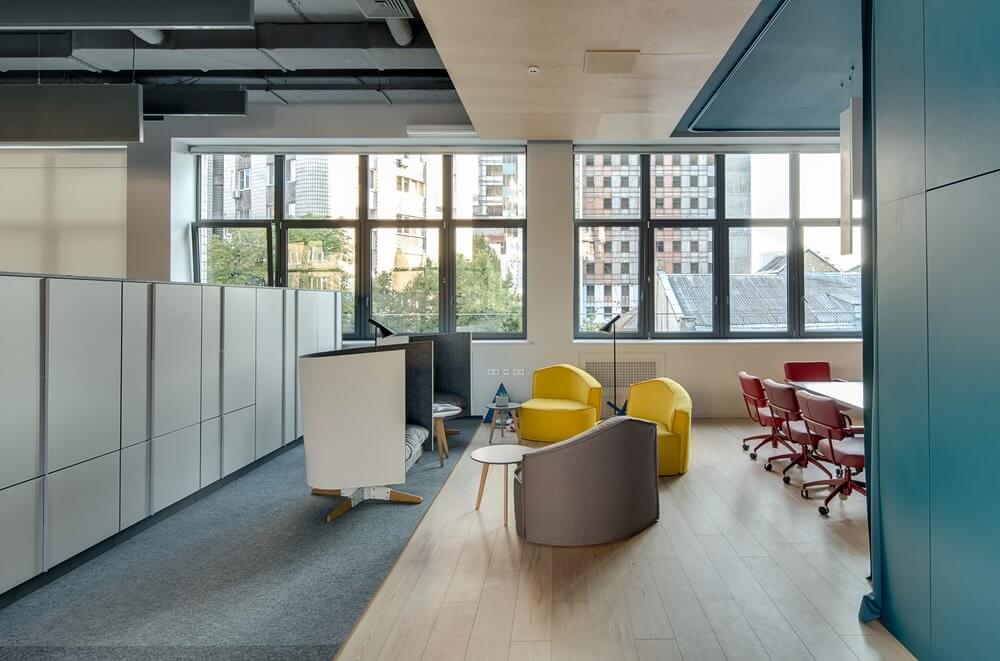
‘Culture’ is an enduring buzzword in the professional world. In fact, the saying “culture eats strategy for breakfast” has never been truer, as a positive and engaging office culture proves to be a company’s most important feature during recruitment.
While the term ‘culture’ can be ambiguous in its understanding, at its core it refers to the work environment employers supply their employees with. In this way, culture is not tied to the work a company does, but rather how a company operates and impacts their employees’ well-being.
Considering the different ways that offices cultivate and foster culture, it is never set in stone—it is susceptible to changes in both internal and external environments.
We believe the future of workplace culture will be impacted and shaped by changes in staffing, technology and office design, which will in turn shift the way we all communicate and interact as professionals.
Workplace diversity will continue to grow as a top priority

Today, the importance of diversity in the workplace is widely understood and accepted, but if we rewind to as recently as 2014, we are confronted with a very different landscape. According to a 2014 Deloitte report that covers HR trends, “Diversity/Inclusion was consistently reported as one of the least important issues on leaders’ minds compared to other HR matters.”
As of late, diversity and inclusion have made their way to the forefront of conversations around workplace culture. Scandals like the 10-page anti-diversity memo by a Google employee have inspired large corporations to make diversity policies and training a priority, and recent research also highlights that companies in the top quartile for racial and ethnic diversity and gender diversity are 35% and 15%, respectively, more likely to have financial returns above their respective national industry medians. All of this together suggests there is going to be a continued push for organizations to invest in these critical initiatives.
Technology will dramatically alter the way coworkers interact

The introduction of augmented reality (AR) and virtual reality (VR) into offices is just around the corner and 2018 could be the year that these technologies start to impact innovative businesses. The introduction of AR and VR offers exciting new opportunities for office employees, as well as those in charge of everyday operations. From improving employee communication and training to conceptualizing new office designs, businesses can use these technologies for a number of needs.
One way VR will impact office culture is by easily enabling remote work. This trend of working from home or remotely has been on the rise over the last few years, and VR is set to accelerate this growth by making it incredibly easy for employees to connect with each other digitally. Gone will be the days of busy and bustling offices where coworkers connect, and in their places will be quieter spaces equipped for virtual conversations. Meetings using AR and VR will spell the end for the empty phone-in format, and enable remote staff to feel as though they are truly in the same room as their coworkers, and therefore able to collaborate as if they were at the same desk.
Innovative office design will be imperative

In the modern office of today, employees have certain expectations about access to amenities, modern tools and inspiring design. This means that organizations will need to place emphasis on (and allocate budget for) improving workplace culture through office design—especially in order to attract top talent. Focusing on employee wellness (both mental and physical) is a great place to start—from planning large-scale renovations for recreational areas to turning unused outdoor spaces into workstations. In order to attract and retain high-quality employees, companies will need to prioritize health and wellness through modern office upgrades. This includes ensuring that the space accommodates employees in terms of ergonomics, acoustics, lighting and thermal comfort.
If there’s one prediction for 2018 that is guaranteed to ring true, it’s that culture will remain one of the most important features of any workplace. Therefore, it’s absolutely critical that employers evaluate their business practices and policies and make the decision to actively invest in growing and cultivating an engaging, inclusive and innovative office culture.
Planning even further ahead? This is what offices will look like in the year 2030.
Photo Credits: Shutterstock / Monkey Business Images, Shutterstock / nd3000, Shutterstock / Jacob Lund, Shutterstock / bezikus



